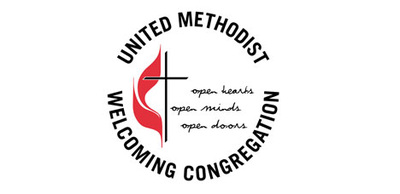|
By Pastor Tracey Leslie
Scripture: Matthew 2:1-16 There is a TV commercial for a medication to treat Psoriasis. It begins with headshots of people. We hear them say, “See Me” as the words appear on the screen superimposed over their faces. Four people, male and female, of varying ethnicity, say, “See me,” “see me,” “don’t stare at me,” “see me.”[i] As human creatures we long to be seen; not objectified; not viewed in a condescending fashion; we simply want to be seen as people worthy of compassion and kindness. This year, during the Advent and Christmas season, along with biblical stories, we are also looking at the Charles Dickens classic, A Christmas Carol. Though not categorized as a “religious book,” Dickens’ story has many themes and elements that connect to our sacred story of the birth of Jesus. Last Sunday, I spoke about Scrooge being visited by the Spirit of Christmas Past. Today we look at the Spirit of Christmas Present and we are compelled to consider that there is something more; something of greater value to be seen than holiday gift wrap, colored lights, bright ribbons and newspaper ads for 20% off. The Spirit introduces himself to Scrooge saying, “I am the Ghost of Christmas Present. Look upon me!”[ii] Scrooge does look; but he does not initially see what is hidden within the folds of the Spirit’s robe. Retired Methodist Bishop, Will Willimon, writes of our Christmas charity: “everyone, even the nominally religious, loves Christmas. Christmas is a season to celebrate our alleged generosity… We love Christmas because… Christmas brings out the best in us.”[iii] In other words, our celebration of Christmas does a good job of making us feel good about ourselves. It is easy to drop our change in those red kettles and go merrily on our way. But Matthew’s story of the birth of Jesus does nothing to indulge our desire to feel good. Some of you are already aware that we have spliced and comingled the gospel stories by placing shepherds and magi side by side in our nativity scenes. But the Gospel of the Crèche is not the Gospel of Matthew for in Matthew’s version of the story, it is not the shepherds and magi that go together; it is the magi and Herod; the worship and the slaughter; the mystery and the madness; the devotion and the destruction. According to Matthew, the magi and Herod’s slaughter of the infants are one seamless story; they belong, sadly, together. According to Matthew, the message of Jesus’ birth is delivered via a star to some very unlikely recipients: magi. They are foreigners (likely of Babylonian or Persian descent) who study the stars. It is their careful looking that will allow them to see the Savior of the nations. In ancient times, it was believed that the birth, or death, of a mighty leader would be “heralded” by some sort of unusual astrological phenomenon. So when this very distinctive star is observed by the magi, they want to follow it, believing it heralds the birth of a mighty ruler. We can infer from the story that, at some point, the star’s appearance or position was no longer clear and so these magi, uncertain of their next step, assume that this new ruler would be found in a palace. They go to Jerusalem, to the palace of Herod, King of the Jews and the inquiry they make leaves Herod and those around him quite unsettled. A friend of mine had an interesting experience a few years back. She was working in a medical office that had a lot of drama and a lot of employee turnover. One day at lunch with some friends, one pointed out a job listing in the local paper. My friend read it and said, “That sounds like my job.” There were some nervous chuckles. Sure enough, at the end of the day, my friend got the pink slip. Herod is none too happy about the magi’s inquiry as to the birthplace of this “king of the Jews.” There’s only one position open for that job and he has no intention of retiring anytime soon. Herod inquires of the religious authorities as to the possible birthplace of this child. Pouring over scripture, their best guess is Bethlehem. So Herod hatches a plot. He lies to the magi; he requests that, once they find this child, would they please return and give him a full report so he can go and worship the child as well. But, Herod’s intention is to dispatch these magi on a reconnaissance mission to seek out the enemy so Herod might go out and destroy him. The magi go on their way with the star once again guiding their steps to the home of Mary and Joseph and the baby Jesus. Once there, the magi kneel before this little child just as one would appropriately kneel before a mighty ruler. They pay him homage; they assume a posture of service and submission. Then, they honor him by offering gifts. Now somewhere between Jerusalem and Bethlehem, these magi had a dream and these guys are great at dream analysis; I mean; analyzing dreams and stars, well that was their job. The dream advised they NOT return to Herod. So they head home by another route and when time passes and Herod realizes they’ve tricked him and given him the slip, he is enraged. He will not be made a fool of. He sends his troops to put to death any child who could, potentially, be this so called “king of the Jews.” It is a dreadful story; but, like it or not, it is a part of the story of the birth of Jesus. It was Jesus’ birth that not only elicited worship and generosity from the magi; it was Jesus’ birth that inspired Herod’s ruthless massacre. And friends, that is how life in this world is. We may wish it otherwise, especially at Christmastime. But we gain nothing by burying our heads in the sand and pretending the evil and suffering is not there. Christmas isn’t a time to pretend that all is right with the world because it’s not. You may consider talk of sorrow and suffering offensive or disruptive in this season of joy; but the truth is that Matthew’s story of Jesus’ birth has always placed joy and sorrow, rejoicing and suffering, even life and death side by side. Still, this morning’s story is just the beginning of Matthew’s gospel, just the beginning of the story of this child who will grow to be a man who will teach his followers that he is to be seen, he is to be recognized, in every man, woman and child who suffers. In chapter 25 of Matthew’s gospel, he will teach a story that we often refer to as the Parable of the Sheep and the Goats.[iv] It is a story of the judgment of all people at the end of time and it is not only a judgment about what we’ve done or not done; it is first and foremost a judgment about what we have seen or overlooked. Jesus, in the parable, proclaims that as we feed the hungry, welcome the stranger, cloth the naked, bring healing to the sick, and visit the condemned; we have done these very things to him. Those who have failed to act are shocked. They ask, “Lord, when was it that we saw you hungry or thirsty or a stranger or naked or sick or in prison?”[v] When was it that we saw you? When was it that we saw you? Jesus replies: “just as you did not do it to one of the least of these, you did not do it to me.”[vi] Catholic priest Richard Rohr says that he often begins his classes on contemplation by repeating the same sentence twice: “Most people do not see things as they are because they see things as they are.”[vii] [repeat] Friends: if, in this holy season, we intend to truly seek and worship and offer our best to the Christ child, we must begin by seeking out and honoring and offering the best of ourselves to those who are in need. Esteemed preacher Thomas Troeger points out something interesting in the story of the magi.[viii] He reminds us that they do not offer their gifts until after they have worshiped and paid homage to the holy child. The giving of their gifts is preceded by the offering of themselves and friends it can be no different for us. Before we give, we must see; we must look upon our Lord in “the least of these;” the hungry and naked and sick and condemned. One of my favorite movies is “The Fisher King.” In one scene, Jack is dialoguing with a well-chair bound Vietnam Veteran who is holding out a cup to collect donations. One passerby tosses coins in his general direction. They miss the cup; falling to the floor, the veteran can’t even reach them. Jack comments, “He didn’t even look at you” and the vet replies, “He’s payin’ so he don’t have to look.”[ix] Friends, we do have to look. It is not enough to toss in a donation here and there. We must look; we must offer our presence and attention before we offer our charity. We must see; not just a cup or a red kettle. We must look upon the person before us and see in them our Lord and Savior. Two of the most exciting opportunities to serve here at Trinity, I think, are Family Promise and Jubilee Christmas. They directly connect us to people. We just wrapped up a week of hosting Family Promise. The meals times, especially, are a chance to sit and talk; to hear people’s stories and get to know them. Likewise, Jubilee Christmas this Saturday provides the opportunity to truly be with people. I hope as Trinity Church that, as we move into the future together, we’ll continue to identify and respond to opportunities not only to give to those in need but to truly look upon them and see them and see Jesus in them. In Dickens’ Carol, after they have journeyed together through the night, at long last it would seem Scrooge does finally look upon the Spirit and truly see him and, when he does, he notices something tucked within the folds of his robe. The Spirit instructs Scrooge, “O Man, look down here” and Scrooge beholds two children described as “wretched, abject, frightful, hideous and miserable.” The Spirit pronounces their names: Ignorance and Want.[x] They are Man’s children; our children and we are called, not by the Spirit of Christmas Present, but by our Savior always present with us, to recognize him in the “least of these.” We are called to see and to serve because the advent, the coming of Jesus, was God’s blessing for all and when we respond to the call of God’s Spirit, God’s blesses us, everyone. [i] You Tube posting of the TV commercial “See Me” for Cosentyx. [ii] Charles Dickens’ A Christmas Carol: With a Four-Week Bible Study for Advent by Travis J. Scholl, Creative Communications for the Parish, 2004. P. 59. [iii] Watch for the Light: Readings for Advent and Christmas; Ploughe Publishing House; 2001; reading for Dec. 14. [iv] See Matthew 25:31-46. [v] Matthew 25:44. NRSV. [vi] Matthew 25:45. NRSV. [vii] Richard Rohr’s Daily Meditation from the Center for Action and Contemplation. December 2, 2016. [viii] Feasting on the Word: Year A, Volume 1. Westminster John Knox Press. 2010. P. 217. [ix] The Fisher King (1991). Quote from the Internet Movie Data Base [x] Charles Dickens’ a Christmas Carol: With a Four-Week Bible Study for Advent. Pp. 78-79.
0 Comments
Leave a Reply. |
Sermon videos are currently available on our homepage.
Pastor Tracey
On a lifelong journey of seeking to live out God's call on my life and to reflect His grace. 10 Minute SermonsCategories
All
Sermon Archives
September 2022
|
Trinity United Methodist Church
Growing in love and service through relationships with God and community
|
Connect with Us:
|
|

 RSS Feed
RSS Feed





